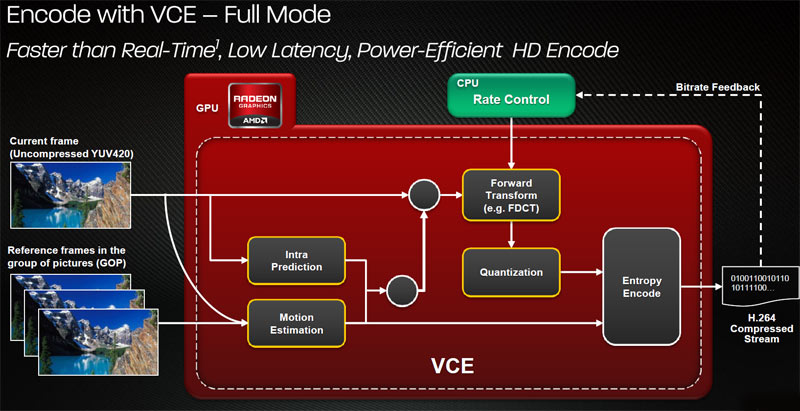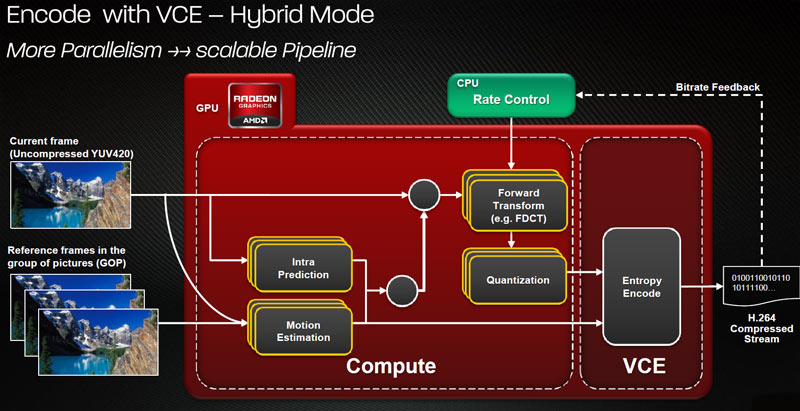AMD Radeon HD 7970: Promising Performance, Paper-Launched
A sample of AMD's next-generation Radeon HD 7970 landed in our lab just before Santa. Don't cross your fingers for one of these in your stocking, though. It's not available yet. Is it fast, though? Our benchmarks suggest yes, but more testing remains!
PRTs, DirectX 11.1, Eyefinity, Stereoscopic 3D, And More
The Tahiti GPU isn’t just an improved gaming and compute engine. AMD is introducing a number of new features to its Southern Islands-based product line:
DirectX 11.1, OpenCL 1.2, and DirectCompute 11.1
Windows 8 is slated to include DirectX 11.1, and the Radeon HD 7970 supports it. You can read more about the new features of Direct3D 11.1 on Microsoft’s Dev Center website.
Partially Resident Textures (PRT)
PRTs present a nifty way to take advantage of Tahiti’s virtual hardware memory, treating the card’s GDDR5 like a managed texture cache. PRTs allow for at least two interesting benefits: reducing stutter and texture popping, and facilitating hardware-managed megatextures (similar to the ones used by id, the developers of Quake and Rage).

As textures are fetched for rendering, only the visible segments of that texture are loaded into memory (in 64 KB chunks). But the magic occurs when a texture call is missed. In that case, the GPU can give feedback to the application and ask for further instruction, giving the application unprecedented control to choose the textures it wants to load and determine how to prioritize as it moves forward. In turn, the GPU can display a low-resolution texture before the higher-resolution version is loaded to (ideally) reduce stuttering.

Eyefinity 2.0, Display Support, and Desktop Enhancements
Get Tom's Hardware's best news and in-depth reviews, straight to your inbox.
According to AMD, the Radeon HD 7970 is the first graphics card able to provide multiple simultaneous independent output streams, called Discrete Digital Multi-Point Audio (DDMA). This means that each attached screen can output its own unique audio signal. Although this isn’t a significant value-add to most enthusiasts who shy away from monitor-attached speakers in favor of discrete speaker systems or headphones, it does have an interesting application to multi-display video conferencing.

The Radeon HD 7970 also introduces simplified ultra-high-resolution display support. To date, 4K-pixel displays required multiple inputs, but the Radeon HD 7900 series can purportedly do this from a single connector now using 3 GHz Fast HDMI or DisplayPort 1.2 HBR2.

Finally, some notes about upcoming features planned for the Catalyst Control Center driver. AMD says that, in February 2012, the 12.2 driver will offer custom desktop resolutions, a feature it says that Eyefinity users asked for since day one. Other enhancements include preset manager improvements and the ability to drop the Windows taskbar on a preferred display in a multi-monitor environment.

Stereoscopic 3D Enhancements
The first stereoscopic 3D announcement ties in directly with Eyefinity, but it’s not specific to the Radeon HD 7900s: the Catalyst 11.12 driver includes Eyefinity support for HD3D, and the already-available Catalyst 12.1 preview driver includes CrossFire support for both HD3D and Eyefinity, lifting one of the biggest detractors from 3D gaming on AMD graphics cards. Rendering in stereo is incredibly demanding, and CrossFire could definitely help. Until now, though, it simply wasn’t an option.

Radeon HD 7970 is the first graphics card to support the aforementioned 3 GHz Fast HDMI standard, capable of frame packing a 1080p stereoscopic 3D signal to televisions at 120 Hz, or 60 Hz per eye. Unfortunately, this doesn’t work on existing televisions. The display must support Fast HDMI explicitly. On a side note, the Radeon HD 7970 also supports 60 Hz (30 per eye) stereoscopic gaming over standard HDMI 1.4a, although we’re not sure how much of a difference it makes compared to the current 48 Hz implementation.
Finally, it’s worth noting that Microsoft will include a Stereo3D API in Windows 8, and AMD’s Radeon HD 7970 is already claimed to support it. The hope is that this vendor-agnostic solution will embolden more developers to get on-board.
UVD and the new Video Codec Engine (VCE)
AMD added dual-stream HD+HD acceleration to its newest iteration of the Unified Video Decoder (UVD), but that's the only change to UVD's decoding feature set. There is something new to talk about on the encoding side, though, and that’s the Video Codec Engine (VCE). Although AMD isn’t specific about VCE’s implementation (making it tough to compare to Intel’s Quick Sync), it does call the feature a multi-stream hardware-based H.264 encoder. Chris Angelini predicted the arrival of something like this nearly a year ago in his Sandy Bridge launch coverage.
The thing is, limited to H.264 encode acceleration, VCE isn’t as comprehensive as Quick Sync. AMD claims that the encode pipeline is capable of working faster than real-time. However, it’s not as scalable on its own as it would be if you were using VCE with the GPU’s compute improvements in parallel.

To that end, the company recommends using VCE-only on lower-end graphics cards, or perhaps in mobile environments where the power savings of fixed-function logic has a big impact on battery life.
The hybrid mode, shown below, is more interesting. Because it involves compute resources (the ALUs), power consumption increases dramatically. The programmable hardware takes over a greater number of encode tasks, while the VCE retains entropy encode duties.

Although we’d love to compare VCE to Intel’s Quick Sync, or even Nvidia’s CUDA-accelerated encode performance, this is yet another components of the Radeon HD 7970 launch that isn’t ready for testing. In fact, none of the features discussed on this page could be tested to make sure they work. AMD simply couldn’t supply us with the software tools able to exploit the virtues of what it says its GPU can do.
Current page: PRTs, DirectX 11.1, Eyefinity, Stereoscopic 3D, And More
Prev Page Bringing It All Together: The Tahiti GPU And Radeon HD 7970 Next Page Test System And BenchmarksDon Woligroski was a former senior hardware editor for Tom's Hardware. He has covered a wide range of PC hardware topics, including CPUs, GPUs, system building, and emerging technologies.
-
thepieguy If Santa is real, there will be one of these under my Christmas tree in a few more days.Reply -
a4mula From a gaming standpoint I fail to see where this card finds a home. For 1920x1080 pretty much any card will work, meanwhile at Eyefinity resolutions it's obvious that a single gpu still isn't viable. Perhaps this will be something that people would consider over 2x 6950, but that isn't exactly an ideal setup either. While much of the article was over my head from a technical standpoint, I hope the 7 series addresses microstuttering in crossfire. If so than perhaps 2x 7950 (Assuming a 449$) becomes a viable alternative to 3x 6950 2GB. I was really hoping we'd see the 7970 in at 449, with the 7950 in at 349. Right now I'm failing to see the value in this card.Reply -
cangelini a4mulaFrom a gaming standpoint I fail to see where this card finds a home. For 1920x1080 pretty much any card will work, meanwhile at Eyefinity resolutions it's obvious that a single gpu still isn't viable. Perhaps this will be something that people would consider over 2x 6950, but that isn't exactly an ideal setup either. While much of the article was over my head from a technical standpoint, I hope the 7 series addresses microstuttering in crossfire. If so than perhaps 2x 7950 (Assuming a 449$) becomes a viable alternative to 3x 6950 2GB. I was really hoping we'd see the 7970 in at 449, with the 7950 in at 349. Right now I'm failing to see the value in this card.Reply
I'll be trolling Newegg for the next couple weeks on the off-chance they pop up before the 9th. A couple in CrossFire could be pretty phenomenal, but it remains to be seen if they maintain the 6900-series scalability. -
cangelini thepieguyIf Santa is real, there will be one of these under my Christmas tree in a few more days.Reply
Hate to break it to you, but there won't be, unless you celebrate Christmas in mid-January.
Start treating your SO super-nice and ask for one for Valentine's Day! -
danraies cangeliniStart treating your SO super-nice and ask for one for Valentine's Day!Reply
If I ever find someone that will buy me a $500 graphics card for Valentine's Day I'll be proposing on the spot. -
a4mula cangeliniI'll be trolling Newegg for the next couple weeks on the off-chance they pop up before the 9th. A couple in CrossFire could be pretty phenomenal, but it remains to be seen if they maintain the 6900-series scalability.Reply
While I have little doubt that 2x of these cards would be very impressive, so would the $1100+ pricetag. I guess coming from the 580 SLI standpoint it might not seem like much, but if you've been considering the $750 ($900 for mobo+psu difference) 3x 6950 route like myself it seems like a major jump.
Of course this is all just initial reaction towards the earliest of benchmarks. Given awhile to really dig around the new 7xxx, while allowing it to mature from a driver standpoint might make the 3x6950 seem foolhardy.
-
Zombeeslayer143 WOW!!! I love the conslusion; all of it, which basically is interpretted as "I'm biased towards Nvidia," and trys to say don't buy this card! Has the nerve to mention Kepler as an alternative; right, Kepler, as in 1 year away. The GTX580 just got "Radeon-ed" in it's rear. I'm not biased towards either manufacturer, just love to see and give credit to a team of people with passion, vision, and hardwork come together and put their company back on the map, as is shown here today with AMD's launch of the 7970. It's AMD's version of "Tebow Time!!"Reply